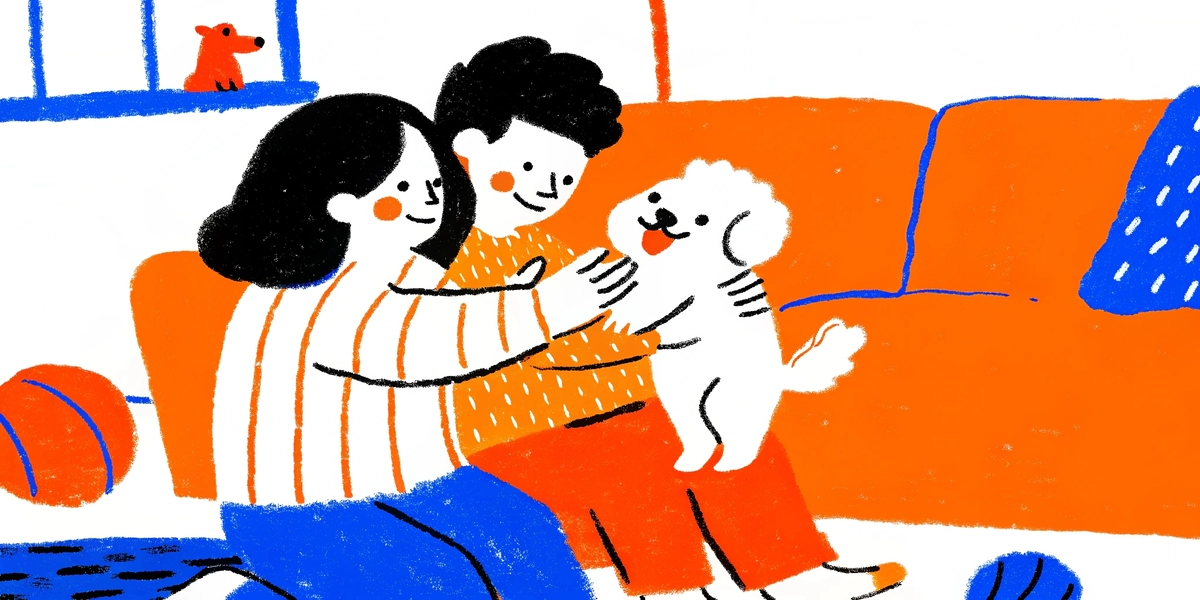Welcoming a puppy is thrilling—but the first few weeks set the tone for the years ahead. Use these ten practical tips to help your new best friend settle in safely and happily.
1. Puppy‑Proof Your Home
Before your pup’s paws hit the floor, scan each room from “nose level.” Unplug or hide electrical cords, secure cleaning supplies, remove choking hazards, and relocate toxic house‑plants. Baby gates are your friend—limit freedom until you can supervise reliably.
Read more: AKC puppy‑proofing checklist (akc.org)
2. Create a Cozy Den
Dogs are den animals. Set up a crate or comfy bed in a quiet corner, add a blanket with a familiar scent, and introduce it with treats so the space feels safe—not “dog jail.”
Read more: AKC crate training steps (akc.org) • Why crates are great (akc.org)
3. Book That First Vet Visit (and Microchip!)
Within the first few days, schedule a wellness check to start vaccines, de‑worming, and flea/tick prevention. Ask about spay/neuter timing and consider microchipping—collars can fall off, but a chip is forever.
Read more: How dog microchips work (akc.org)
4. Feed a Quality Puppy Diet on a Schedule
Puppies need nutrient‑dense food formulated for growth. Stick to the breeder’s diet for a few days, then transition slowly if you switch. Typical schedule:
- 8–12 weeks: 4 meals/day
- 3–6 months: 3 meals/day
- 6–12 months: 2 meals/day Always provide fresh water and keep people‑food (like chocolate, grapes, onions) out of reach.
Read more: ASPCA dog nutrition tips (aspca.org) • ASPCA feeding schedule (aspca.org)
5. Start Housetraining Immediately
Take your puppy to the same outdoor spot first thing in the morning, after meals, play, naps, and every 30–60 minutes while awake. Cue “go potty,” then praise and treat the instant they finish. Accidents? Clean with an enzymatic cleaner and refine your schedule—never punish.
Read more: AKC potty‑training guide (akc.org) • Extra potty tips (akc.org)
6. Use the Crate as a Training Tool
A just‑big‑enough crate helps with housetraining, protects your belongings, and gives your pup a place to relax. Feed meals inside, offer safe chews, and keep sessions positive.
Read more: AKC crate training steps (akc.org)
7. Socialize Early—But Safely
The critical socialization window (about 6–16 weeks) shapes adult temperament. Gently expose your puppy to different people, surfaces, sounds, and friendly, vaccinated dogs. Until vaccines are complete, carry your pup in busy areas or host playdates in safe yards.
Read more: AKC puppy socialization (akc.org) • Socialization window explained (akc.org)
8. Establish House Rules & Train With Positivity
Decide early: couch privileges? Dining‑room access? Consistency prevents confusion. Reward calm behavior, redirect nipping to toys, and teach bite inhibition with a gentle “ouch!” and break in play. Harsh punishment can create fear—focus on setting your puppy up to succeed.
Read more: Creating house rules (akc.org) • Stop puppy biting (akc.org)
9. Balance Play, Exercise & Rest
Several short play sessions, brief walks, and brain games (like treat puzzles) tire a puppy nicely. Avoid forced runs—growing joints are delicate. Expect 16–20 hours of sleep a day and protect nap time so your pup stays happy and well‑behaved.
Read more: How much do puppies sleep? (akc.org) • Puppy routine tips (akc.org)
10. Be Patient and Enjoy the Journey
Accidents happen, shoes get chewed, and some nights are sleepless—but each challenge is temporary. Celebrate tiny victories, keep training sessions short and fun, and take lots of photos. Puppyhood flies by, and the bond you build now lasts a lifetime.
Read more: First‑day puppy tips (akc.org)
